Years ago I was wondering the hilly cobblestone streets of Montmartre when I came upon the little vineyard. Imagine my surprise to find an entire vineyard right in Paris proper, and my shock to find out it even produces wine. Much to my chagrin, a sign posted alongside the gates of the Clos Montmartre boldly stated “closed to the public.”
With a bit of research, I found out it’s not totally impossible to visit… At the time, there were basically two ways to visit the Clos Montmartre: the occasional vineyard tour offered only in French by the Musée de Montmartre or the even more elusive visit offered only during the 4-day long Fête de Vendanges each October.
I never happened to find myself in Paris at just the right time to be able to check off a visit to the Clos Montmartre from my wine travel bucket list. That is, until Walks invited us to try out their Exclusive Montmartre Experience tour that ends in the best way: with a guided visit of the Clos Montmartre and a wine tasting of their limited-production wine.
A long time fan of Walks tours, I didn’t hesitate to pack a bag and jump on the 2-hour Bordeaux to Paris fast train for a few days of Parisian discovery.
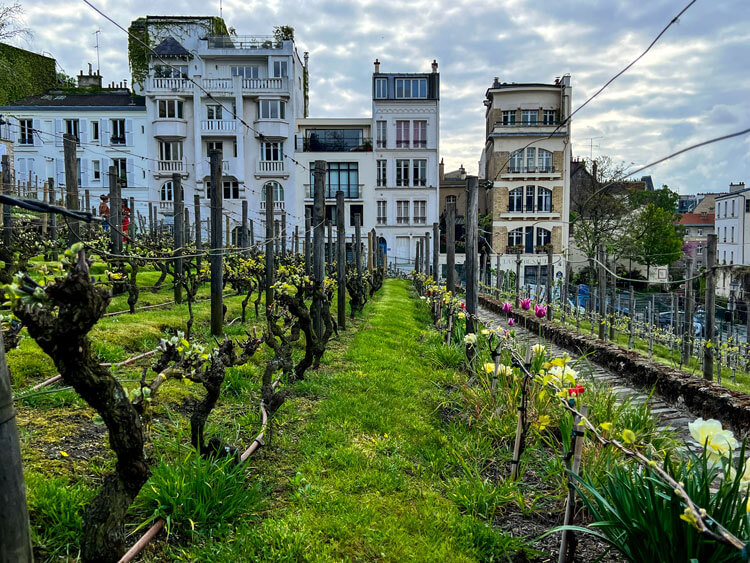
Clos Montmartre: Paris’s Hidden Vineyard
Montmartre is famous for its artistic heritage, particularly the impressionists like Renoir and Cézanne. But long before famous artists like Picasso and Dali called the hilltop 18th arrondissement of Paris home, Montmartre was a rural hilltop village surrounded by vineyards and farmland. In fact, the tranquil commune was thriving in wine making and gypsum mining until as recently as 1814 when life there was seemingly interrupted by the Russian army making Montmartre a base to bombard Paris during the Napoleonic Wars.
Grape vines have grown all over the hilltop of Montmartre since at least the 4th century when the Roman Emperor Julian had a vineyard on the Montmartre hill. And it might be hard to picture now with Paris being the bustling, urbanized capital that it is, but Paris was once one of France’s major wine producing areas. There was even a royal decree under Louis XV that forbade the import of wine from anywhere further than 70 kilometers from Paris.
But slowly with both urbanization and the devastating phylloxera epidemic, viticulture died out. Only a handful of vineyards remained in what was once one of France’s largest wine producing areas. And the Clos Montmartre, though planted in 1933, is the only vineyard that can lay claim to being located in Paris proper.

Practically hidden in plain sight, the small vineyard is tucked away behind the Sacré Coeur de Montmartre. Only steps away from the Instagram-famous La Maison Rose, the Clos Montmartre might seem like occupies an odd location in the heart of it all. As we learned during our visit to the Clos Montmartre, it is because local resident artists came together to found the vineyard in 1933 as a means to prevent an impending real estate development project.
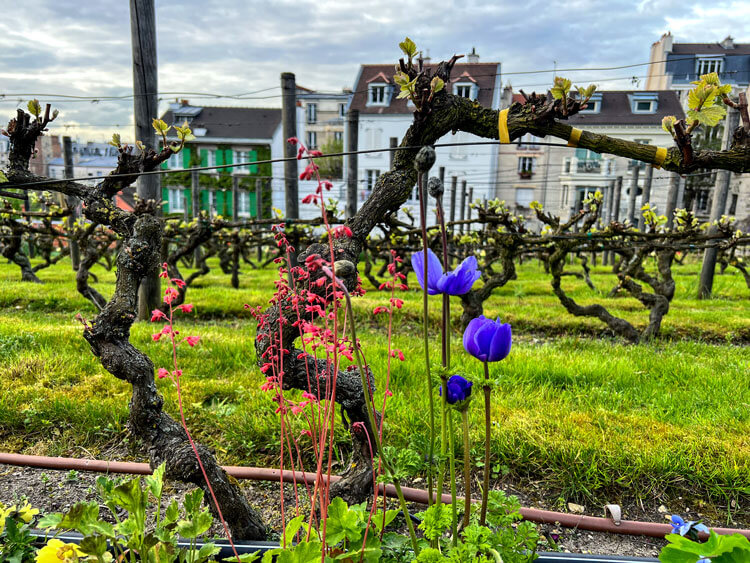
The vineyard was strategically planted precisely because French law states nothing can be built on a vineyard. The 0.15 hectares was planted with 27 different grape varieties of both red and wine grapes and some 1700 individual grape vines in 1933, which were brought to Clos Montmartre as offerings by various prestigious wine regions around the world from Bordeaux to Japan. As the vineyard was planted just before France passed its strict law regulating vineyard agriculture and wine fabrication, there’s truly a fascinating bunch of grape varieties growing in Clos Montmartre, including ones no longer grown anywhere else in France.
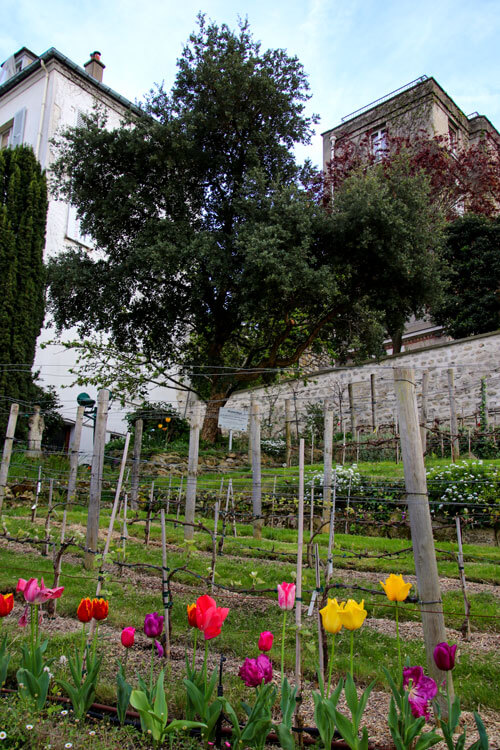
But the Clos Montmartre isn’t only a sort of museum to long forgotten grape varieties, but also boasts the unique distinction of being the vineyard in France with the most flowers! On our early spring visit, tulips offered a colorful contrast to the newly budded grape vines. Fruits like strawberries and peaches also grow in the vineyard. There’s also olive trees and even a cork tree.
The first harvest came in 1937, with everything harvested by hand – and it is still hand-harvested today. Ever since Clos Montmartre has served as a sort of conservatory of Montmartre’s culture and history.
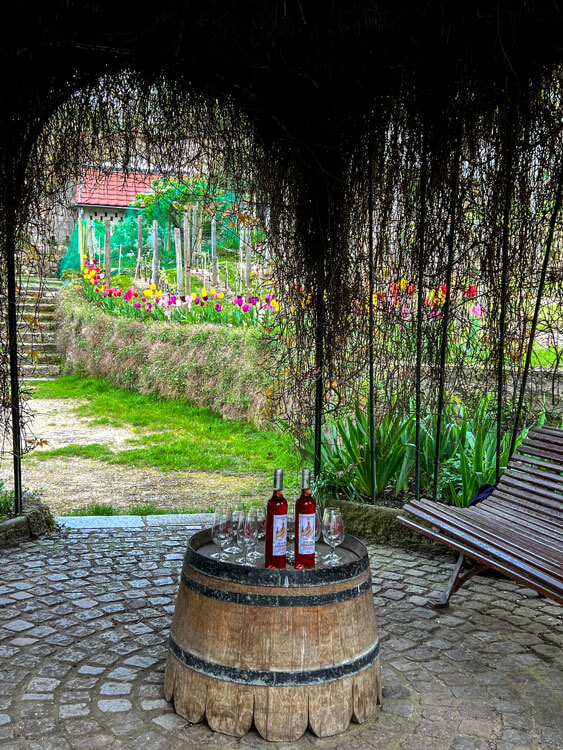
From the very beginning of the first vintage, all proceeds from the sale of the wine have been donated to serve the local community. In 1934, the Comité des Fêtes et d’Actions Sociales was founded. The non-profit watches over the Clos Montmartre and the profits from the sale of the wine specifically go to developing social actions for children and the elderly of Paris’s 18th arrondissement.
Every October the Clos Montmartre celebrates its’ harvest with a big festival called the Fête des Vendanges. For four days, Montmartre honors this tiny patch of land and becomes even more lively with costumed parades, concerts, street performances and giant picnics with an open-air market of the gastronomic specialties from every part of France. During the Fête des Vendanges, quite literally meaning harvest festival, the grapes are picked and brought downstairs to the basement of Montmartre’s town hall where they are pressed, fermented and bottled.
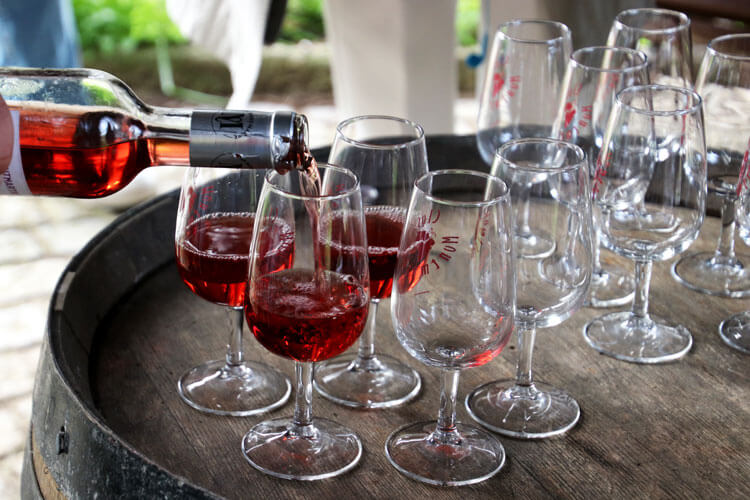
The wine is a type of rosé, more like a clairet. Around 1500 bottles produced each year and the bottles are considered to be collectors items – not because the wine is spectacularly good, but because of the causes behind producing the wine.
Living in Bordeaux, I’ve certainly sipped some of the world’s finest wines from Château d’Yquem to Château Mouton Rothschild’s 1973 vintage with the tribute artist label drawn by Pablo Picasso. While Clos Montmartre might unabashedly state their wine isn’t anything spectacular, there isn’t a better wine at the moment of sipping a glass while surrounded by the vines, flowers and the Mansard-style rooftops of Montmartre. This is a vineyard you come to for the experience, and I promise it won’t be a moment you soon forget from your trip to Paris.
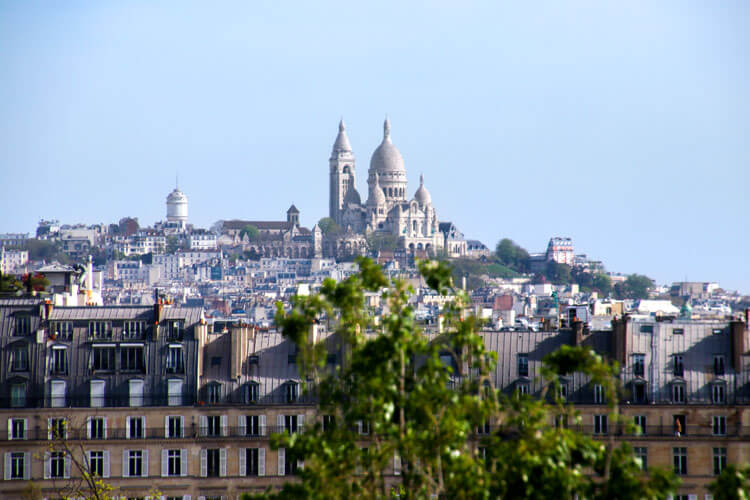
Beyond the Montmartre Vineyard
Walks Exclusive Montmartre Experience tour doesn’t only visit the Clos Montmartre. In fact, the hour spent at the Clos Montmartre is the perfect ending to the tour through Montmartre.
We actually began the walking tour with a ride on the Montmartre funicular, which quickly whisks you up the hill to the foot of Sacré Cœur. Of course, we admired one of the most spectacular views over Paris before walking through both some of the most bustling parts of Montmartre like Place du Tertre (or Artists’ Square) and continuing on to some of the more off-the-beaten path.
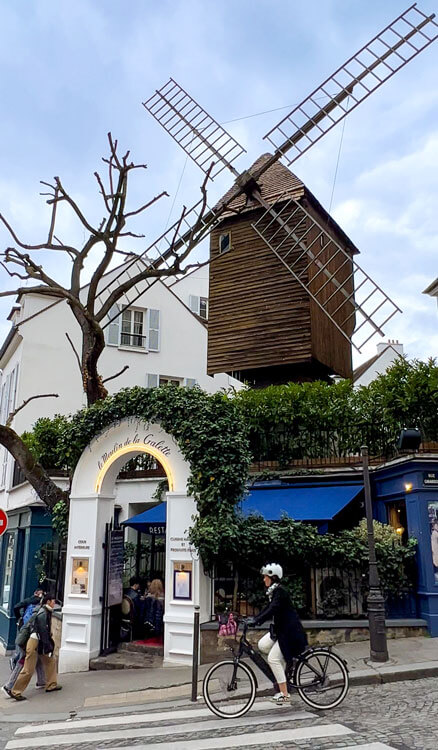
We wandered by Le Moulin de la Galette, made famous by the 1876 Renoir painting “Dance at Le Moulin de la Galette” that you’ll find in Paris’s Musée d’Orsay. The windmill has been a fixture of Montmartre since the 17th century, and got its’ name from the Debray family, who made a type of brown bread called galette.
We paused to admire the Bust of Dalida, the famous singer who called Montmartre home for 25 years. The French singer had a profound impact on French society, and in 2003 she was placed third behind Madonna and Céline Dion for the award Greatest Singer of the Century.
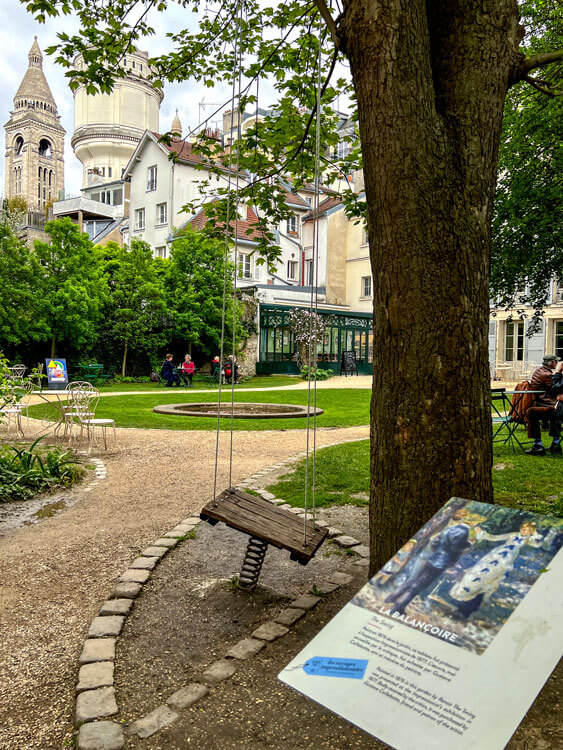
And our tour lead us to the Musée de Montmartre, housed in a 17th-century building that was the studio of both Renoir and Suzanne Valadon. Overlooking the Clos Montmartre, we spent time here discovering the permanent collection, the gardens that were inspired by the Renoir masterpieces painted here, and even a bit about Le Chat Noir as the famous cabaret was established in Montmartre. And that’s exactly what this museum is all about – the history of how this village built itself up to become the famed artists retreat Montmartre is famed as today.
Like the Musée de Montmartre itself, the Walks Exclusive Montmartre Experience gave us a much more in depth insight into Paris’s 18th arrondissement than I’ve ever gotten on all my previous trips. I was left with a memorable afternoon spent exploring one of Paris’s most interesting arrondissements, and a longing to return to the hilly neighborhood.
Know Before You Go
The Walks Exclusive Montmartre Experience includes:
- a walking tour of Montmartre
- Funicular ticket to the steps of the Sacré Coeur
- Skip the line tickets to the Musée de Montmartre
- Private tour and tasting at the Clos Montmartre
The tour is 2.5 hours and is available on Wednesdays, Fridays and Saturdays (also Sundays in June and July). The tour ends at the Clos Montmartre, and the nearest metro stop is Line 12 Lamarck – Caulaincourt.
Our trip to Paris was in partnership with Walks in order to bring you this story. However, Luxe Adventure Traveler maintains full editorial control of the content published on this site. As always, all thoughts, opinions, and enthusiasm for travel are entirely our own. This article contains affiliate links. When you book on Walks through our affiliate partner sites, we earn a small commission at no additional cost to you.